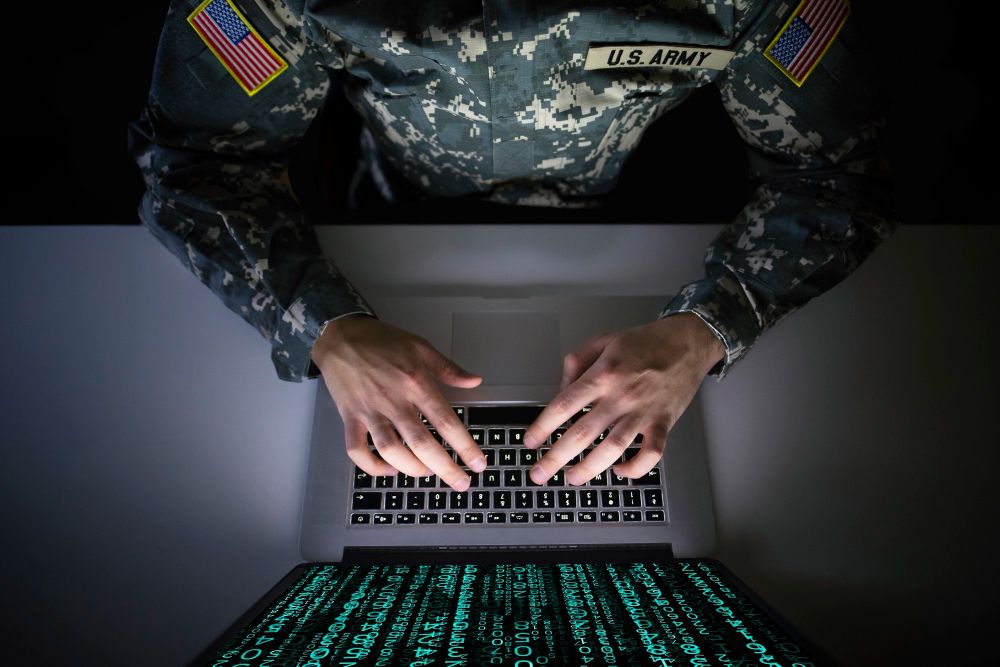The Critical Issue of Cyber Warfare Preparation
Why is the fighting between Russia and Ukraine being called the world’s first hybrid war?

Much has been learnt about modern warfare since the Russian invasion of Ukraine: the weakness of the Russian Airforce, the need for a well-stocked supply of artillery shells, and the newfound power of drones, to name just a few.
However, some of the largest advances in military understanding are happening in cyberspace, where the war is every bit as aggressive and decisive as it is in the real world.
For this reason, many are calling the war in Ukraine the world’s first hybrid war – with battlefields on land, in the sky, at sea, and now also on the Internet.

Today, almost all modern hardware is interconnected across the battlefield. Each artillery piece, missile, rocket launcher, command centre, drone, tank, battalion post, ship, and aircraft relies on GPS signals, coded 5g cellular networks, cognitive radar, microchips, semiconductors, and large-scale analytic engines in order to perform.
If one side is able to disengage, disconnect, and disrupt this technology then all of the other sides orders, functioning electronic defence systems, autonomous hardware, and general ability to fight will cease. For this reason, winning the war in cyberspace can mean winning the war.
Winning the War in Cyberspace can Mean Winning the War
This has led to both two sides conducting an intense cyberwar, with hacking, counter-hacking, and putting firewalls in place around key military systems.
Meanwhile, the rest of the world is watching and learning…with some trepidation. Even the Americans are worried.
“In recent years,” reports military analysts Mike Weigand, “there has been a growing drumbeat of warnings about the vulnerability of American weapon systems.”
This is evident in the US military’s January 2023 report Challenges in Establishing a Comprehensive Cybersecurity Strategy and Performing Effective Oversight, which raised fears over digital security risks for ‘mission-critical vulnerabilities’.

While current cyber security has done its job in defending against lone hackers, terrorists, and incursions from North Korea, the fear is that any potential conflict between Western forces and a fully engaged Russia or China will expose weak points and put entire armies at risk.
“While we didn’t necessarily have to worry about terrorists and insurgents hacking into our jets, ships or tanks over the last 20 years, we know that nation states will certainly try to do so,” said US Dept. of Defence Chief Information Officer John Sherman before a recent the US House of Representatives Armed Services Subcommittee.
“When a foreign power like China can get into our networks, our data, and our weapon systems, that puts our Nation at risk,” adds US General Paul Nakasone.
With this in mind, defence chiefs have agreed a three-pronged strategy on how to improve digital-security in readiness for a future cyberwar.
Ring-Fenced Network Security
Being able to block all incoming digital attacks is a critical line of defence, especially in operation vital areas, such as command centres and armament systems. These must be protected as a top priority.
For example, a ship or tank is connected to the outside world for communications, positioning, target locating etc. Cyber defence ring-fencing is needed to prevent attacks as these systems literally control most weapon systems to fire and move. If they are hacked on disabled, then the war could be lost despite on the ground superiority.

Maintenance
Weapons systems need constant maintenance and testing, with upgrades to state-of-the-art cybersecurity for all frontline and battle-ready hardware required.
At the same time military hardware operators should be supplied with procedures in how to get unwanted technology or data off their platforms. Those on the ground who are actually handling and operating defence systems also need effective training on cyber security and preventive practices.
Data Management
Once effective blocks are put in place, technology specialists will be able to analyse the substantial amount of data that is captured/blocked/intercepted. This will provide the information required to improve against future attacks.
As Lt. General Christopher Donahue stated in a recent address, “whoever can control and access the right data will win or have a decisive advantage in conflicts today and tomorrow.” Adding that, “we have to get our data straight.”
This is especially true in military systems which are increasingly using AI. One fear is even that AI will reach a tipping point to be able to hack complete systems. How could the West react if Russian or Chinese AI hacked and disabled the Pentagon or its entire nuclear deterrent system?
For this reason, all leading militaries are adopting a forward leaning approach to modernization – relevant across all services/departments. Realising the need to capture, translate, enrich, store, and process data to gain a maximum benefit.

“The challenges we face modernizing our defense science and technology enterprise have been decades in the making,” explains that US National Defense Science & Technology Strategy 2023. “Moreover, we now face in the People’s Republic of China a strategic competitor with access to cutting-edge research and development and the will to mount a sustained challenge to a stable and open international system. This represents a clear challenge to the US Department of Defense’s technological edge.”
As military analyst Mike Weigandconcludes, “The threat could not be more stark, and the opportunity to make demonstrable change could not be more clear -- the Department must act now to better protect their national security assets on which our warfighters and intelligence professionals depend.”
Because as seen in Ukraine, war is fought with technology, and a victory in cyberspace can decide the outcome of the war.
Photo credit: Geralt on Pixabay, Kalhh, Aleksanderlittlewolf on Freepik, DC Studio, & Jaydeep

